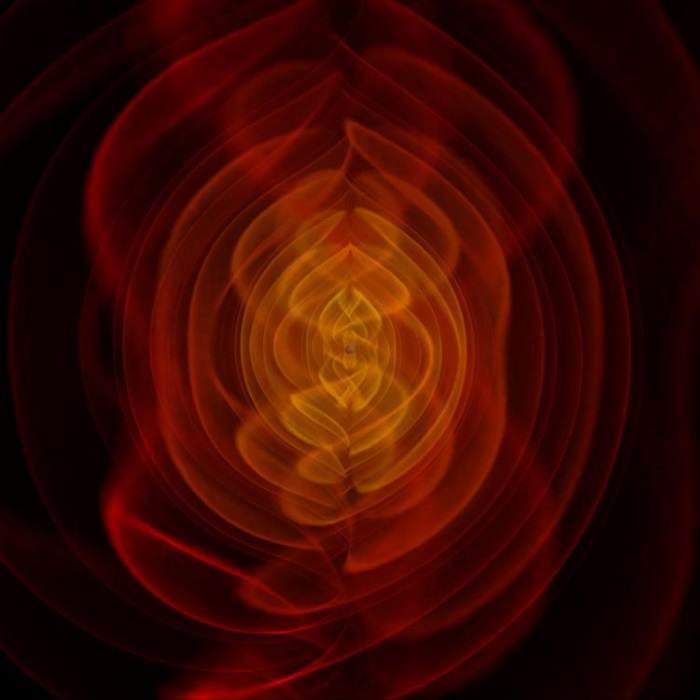What are Gravitational Waves?
What are Gravitational Waves?

Gravitational waves are 'ripples' in the fabric of space-time caused by some of the most powerful processes in the universe - colliding black holes, exploding stars, and even the birth of the universe itself. Albert Einstein predicted the existence of gravitational waves in 1916, derived from his general theory of relativity. Einstein's mathematics showed that massive accelerating objects (such as neutron stars or black holes orbiting each other) would disrupt space-time in such a way that waves of distorted space would radiate from the source.
According to Newton's theory of gravity, when a mass changes position, the entire gravitational field throughout the universe changes instantaneously, and the resultant gravitational forces are instantly changed accordingly. But the theory of general relativity - the most commonly accepted description of gravity - predicts that a change in gravitational field will travel through the universe at the speed of light. It is exactly these changes traveling through space that are gravitational waves.
Detecting and analyzing the information carried by gravitational waves will allow us to observe universe in a way never before possible. Gravitational waves are not absorbed or reflected by the matter in the rest of the universe, thus we will be able to see them in the form in which they were created - we will effectively be able to "see through" any objects between Earth and the gravitational wave source. Most importantly, gravitational waves hold the potential of the unknown. Every time humans have opened new "eyes" on the universe, we have discovered something unexpected that revolutionized how we saw the universe and our place within it.
Although gravitational waves were predicted to exist in 1916, observational evidence for their existence didn't come until 1974 when two astronomers, Russell Hulse and Joseph Taylor, discovered a binary pulsar system (two neutron stars orbiting each other). When the astronomers measured how the orbits of the two stars were changing over time, they found that the changes agreed so well with the predictions of General Relativity, it left no doubt that the system was radiating energy in the form of gravitational waves. Since then, more astronomers have studied the timing of pulsar radio emissions and found similar effects that confirm the existence of gravitational waves. But these confirmations have come indirectly, from observing the effects of 'unseen' gravitational waves on remote astrophysical objects and not through actual physical effects here at the Earth. In that sense, LIGO and other facilities like it around the world will be the first to detect gravitational waves.

Gravitational waves are exceedingly small. A strong gravitational wave will produce displacements on the order of 10-18 meters - this is 1000 times smaller than the diameter of a proton! Waves of this strength will be produced by very massive systems undergoing large accelerations, like two orbiting black holes that are about to merge into one. Since systems like these are rare, these sources will be many light-years away. Therefore, the search for gravitational waves is seeking the minute effects of some of the most energetic astrophysical systems from the depths of the universe.
